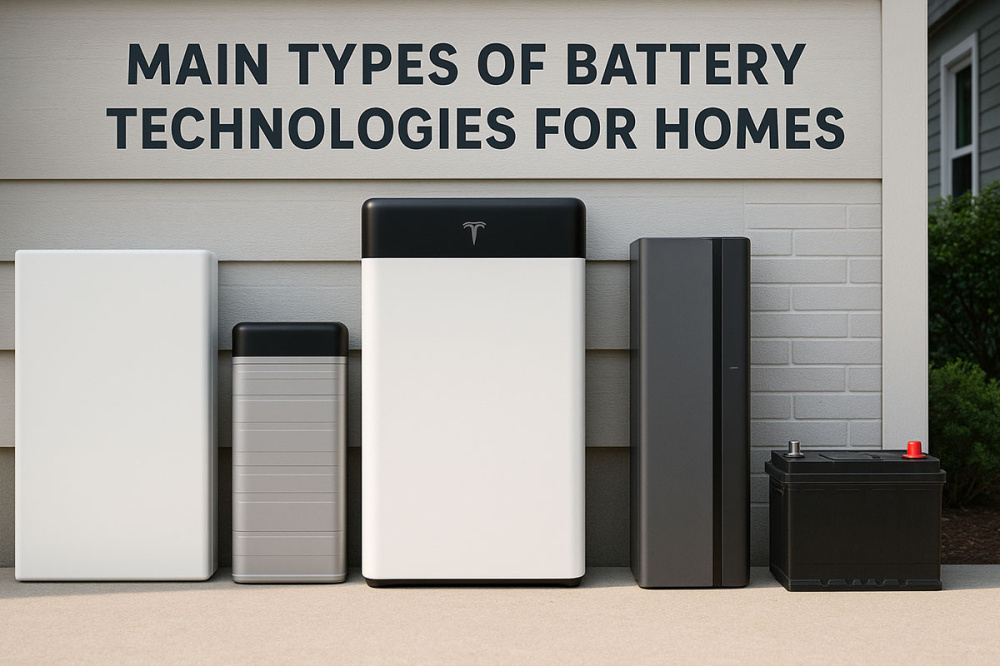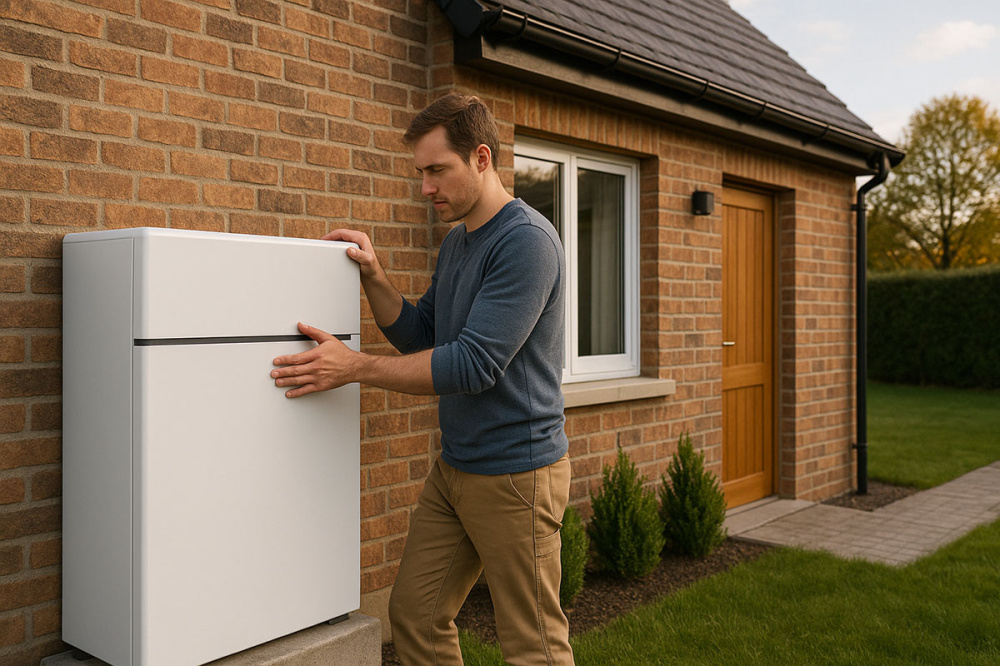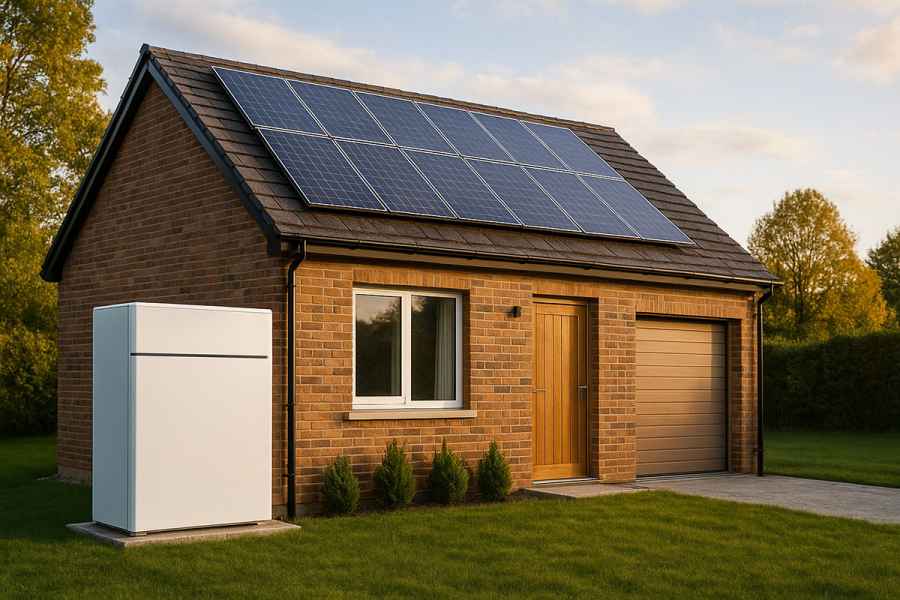Welcome the dawn of energy independence in your own home, where the power of the sun and wind is no longer wasted, but stored at the heart of advanced technology — home battery systems. These devices transform an ordinary house into a true fortress of energy autonomy. Learn how to make your home fully self-sufficient and join us in a deep dive into the solutions that are changing the game.
"Energy is freedom — but only if you control it."
Every time the lights go out, we’re reminded of our dependence on the grid. But modern technology has reached a point where we no longer have to wait for mercy from utility companies. We can become the generators, accumulators, and masters of our own power. This is the new philosophy of smart living: instead of paying for every kilowatt, we choose to store, manage, and distribute electricity on our own terms.
What Is a Home Battery and Why Do You Need One?
Imagine a home where storms and blackouts no longer cause panic. Where your appliances keep running, and your family stays warm and connected. This is what a home energy storage system makes possible — by storing energy during the day and releasing it when you need it most.
A home battery is much more than just a supplement to solar panels. It’s the backbone of a stable home, the quiet guardian of your autonomy, a seamless source of electricity — even during the darkest hours.
Main benefits
-
Enables full energy independence from the grid
-
Stores excess solar or wind energy for later use
-
Powers your home during outages
-
Saves money by supplying power during peak rate periods
True energy independence begins when night is no longer a threat.
Even in a modest home, a battery system can be a powerful ally. While neighbors scramble for flashlights, your house remains a sanctuary of light, warmth, and peace. It’s more than comfort — it’s control. And it’s a glimpse of what the future of living looks like.

Main Types of Battery Technologies for Homes
The home energy storage market offers a range of technologies — each designed to meet different needs and expectations. From basic AGM batteries to high-end lithium modules, the choice depends on how you envision your energy freedom.
LiFePO4 (Lithium Iron Phosphate)
The top choice for longevity and safety. Lifespan of up to 15 years, high cycle count. Perfect for daily use with solar panels.
AGM / GEL (Lead-Acid)
Budget-friendly but less efficient. Shorter lifespan, best for seasonal use or emergency backup.
Nickel-Metal Hydride (NiMH)
Less common, but eco-friendly. Often used in specialized applications.
Hybrid All-in-One Systems
These modern solutions combine an inverter, charge controller, and battery in a compact unit. Quick to install and smartly managed.
These technologies are like tools in your energy toolbox. Choose what best fits your lifestyle and goals.
Each battery type has its own story. Lead-acid batteries are the reliable classics. Lithium-based systems are the modern standard — resistant to cold and frequent use. And hybrids? They're the smartphones of energy tech: sleek, intelligent, and efficient.
Trusted Brands in the World of Home Energy Storage
When it comes to storing power, trust matters. While the market is full of options, a few brands stand out for their reliability, innovation, and performance.
Tesla Powerwall
The iconic choice. Powerful, smart, stylish. Automatically manages energy loads and provides backup during outages.
Huawei Luna2000
Modular design that scales with your needs. Seamless compatibility with Huawei solar inverters. Strong safety features.
BYD Battery-Box
Great value for money. Long-lasting, expandable, and easy to install.
Pylontech
Ideal for homeowners seeking solid performance at a reasonable price. Compatible with most inverters.
Victron Energy
European quality with a reputation for reliability. Especially suited for remote homes and off-grid setups.
"It’s not the weather outside that matters — it’s the light and warmth inside that define your comfort."
Choosing a brand is like choosing a doctor or architect — you're handing over your home's lifeline. The best manufacturers don't just make batteries; they build peace of mind and future-proof energy solutions.

What to Consider When Choosing a Home Battery
Selecting a battery is like choosing the heart of your energy system. A wrong choice can undermine everything. So before you invest, consider:
Battery capacity (kWh)
The higher it is, the longer your home can run off-grid. For most homes, 10–15 kWh is ideal.
Cycle life
Ranging from 3,000 to 8,000 cycles. The more, the better.
Battery Management System (BMS)
Essential for safety — prevents overheating, overcharging, and deep discharge.
Inverter compatibility
Make sure your battery supports your inverter model or offers a universal communication protocol.
Temperature range
Critical for batteries installed outdoors or in unheated spaces.
One of the most common mistakes is buying a battery that’s too small or too large. Consider your daily usage, peak loads, seasonal variation, and even household habits. Every detail matters.

Is It Worth It Financially? Let’s Do the Math
Let’s take a typical home using 5,000 kWh per year. A battery paired with a solar system allows you to store free energy for evenings and nights, as well as avoid paying high peak tariffs.
-
System cost — starting at $6,000
-
Payback period — 6 to 8 years
-
System lifespan — up to 15 years
-
Yearly savings — $800 or more
-
And most importantly — independence
"Electricity is no longer a service you buy — it’s a resource you create."
Don’t be scared by the upfront cost. A battery system is not an expense — it’s a long-term asset. It pays you back with stability, control, and peace of mind. It’s an investment in your future, your comfort, and your security.
How to Integrate a Battery into Your Home
Creating a home energy system isn’t rocket science — it’s a practical project you can complete in 2–4 weeks.
Integration steps
-
Analyze your seasonal energy consumption
-
Calculate the needed solar and storage capacity
-
Choose an inverter that works with your battery
-
Schedule professional installation and wiring
-
Configure BMS and test the system
-
Optionally integrate with smart home systems
Whether your home is new or decades old, energy systems can be adapted. Batteries can be installed in garages, basements, or utility rooms — even stylishly built into interior elements. And all with minimal disruption.
Conclusion
The world is changing — and with it, our idea of comfort. In a home with battery storage, there’s no panic during a blackout. No rising tariffs to worry about. No dependence on a fragile grid. Just peace, light, and warmth.
"The real energy of the future is the energy we know how to store."
When the outside world is unpredictable, technology gives us stability. A home battery is your silent guardian against darkness. And it’s always ready.






